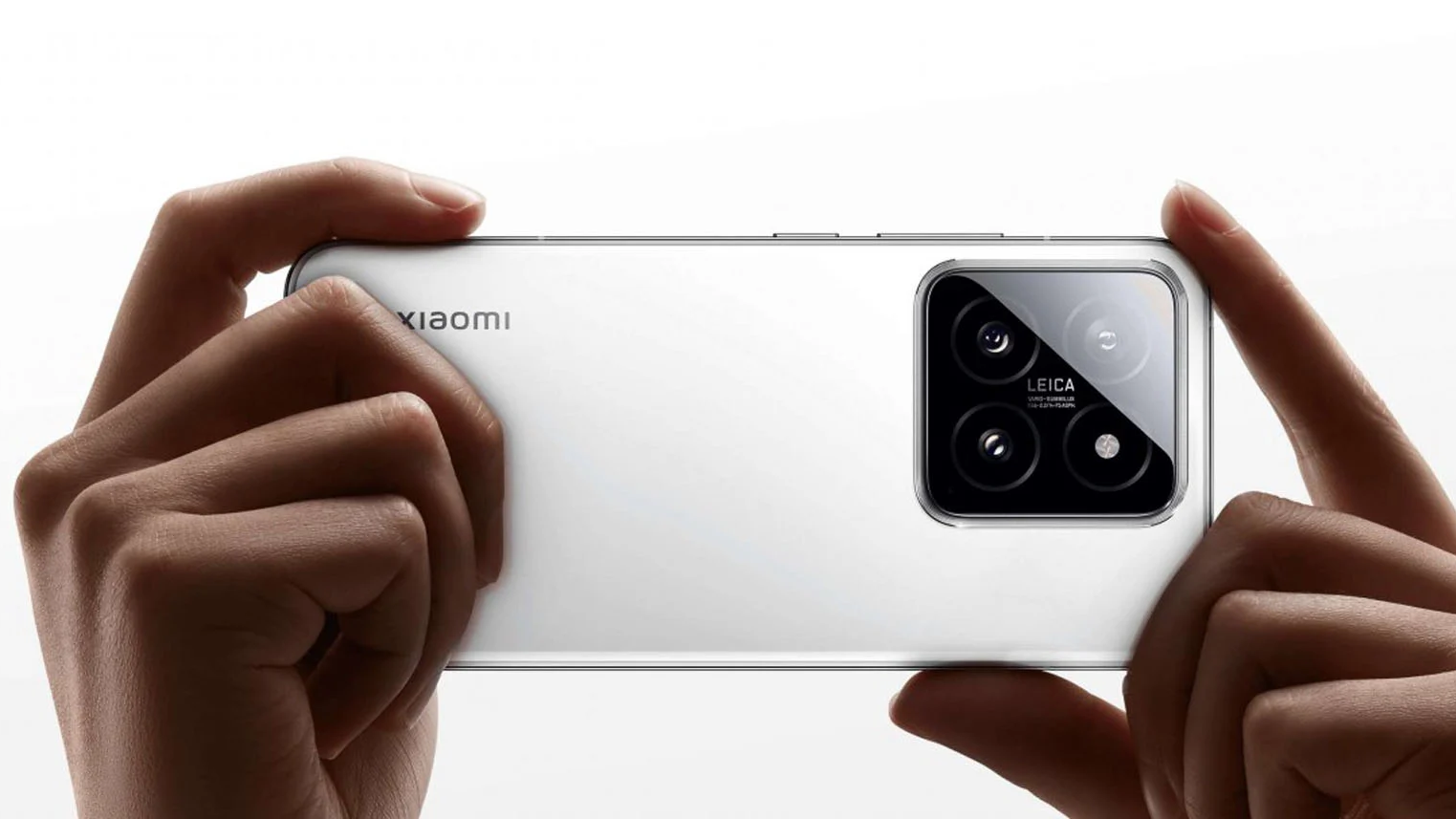Xiaomi launches new flagship phones... with a camera DOWNGRADE?!
New Xiaomi 14 and 14 Pro phones are much improved over last year's handsets, except in one crucial area

Xiaomi has launched its latest flagship phones, the Xiaomi 14 Pro, and its slightly more mainstream sibling, the Xiaomi 14.
Xiaomi 14 Pro
In terms of camera hardware, the 14 Pro appears to be almost identical to its predecessor, the Xiaomi 13 Pro, but in one key area the new phone could be considered a downgrade. Where the 13 Pro packed a large 1.0"-type primary camera sensor, the 14 Pro uses a smaller 1/1.31" sensor. Both have a 50MP resolution, so the new phone has 1.2µm pixels where the old Xiaomi 13 Pro could boast larger 1.6µm pixels, theoretically giving increased light sensitivity and therefore better low light performance.
However, the 14 Pro does have an ace up its sleeve. Its new Leica-developed 23mm-equiv. lens features an f/1.42-f/4 variable aperture - a marked improvement over the f/1.9 lens in the 13 Pro. Whether or not this extra maximum aperture size is enough to overcome the reduced light sensitivity from the smaller sensor remains to be seen. As with the 13 Pro, the 14 Pro's primary camera gets optical image stabilization, dual pixel PDAF, as well as manual aperture control in 1/3 EV steps.
The Xiaomi 14 Pro also inherits the same Leica-branded ultrawide and telephoto cameras from the 13 Pro, both with a 50MP resolution. The 14mm-equiv. ultrawide snapper has a 115-degree field of view and an f/2.2 max aperture, while the 75mm-equiv. telephoto module enables 3.2x optical zoom while benefiting from OIS and an f/2 aperture. Like the 13 Pro, the 14 Pro is capable of capturing 8K HDR video at 24fps, and 4K video at up to 60fps.
Although the 14 Pro shares the same 6.73-inch display size, 1440 x 3200 resolution and 1-120Hz variable refresh rate AMOLED tech as its predecessor, the 14 Pro's screen specs have been upgraded elsewhere. The new phone now boasts a higher 3,000-nit peak brightness, 68 billion display colors, while retaining the same Dolby Vision and HDR10+ support. The 14 Pro also ditches the 13 Pro's Corning Gorilla Glass Victus screen protection in favor of Xiaomi's own Ceramic Glass. This is said to adopt "a special powder formula that is heated at over 800℃, and through crystal formation, microcrystals are produced, which form an interlocking structure and become evenly dispersed in the glass. This design allows Xiaomi Ceramic Glass to far exceed the strength of typical glass, boasting 10 times higher drop resistance and 1.25 times higher scratch resistance while maintaining high transparency."
The Xiaomi 14 Pro is based around a Qualcomm SM8650-AB Snapdragon 8 Gen 3 SoC with 12GB or 16GB of RAM and up to 1TB of internal storage. The 4880mAh battery supports 120W wired charging and 50W wireless HyperCharge.
The Xiaomi 14 Pro is available to pre-order in China, in black, white, or green color options, priced at CNY 4,999 (approx. USD $684) for the 12/256GB base model, through to CNY 5,999 (approx. USD $821) for the 16GB/1TB variant. Global availability and regional pricing have yet to be confirmed.
The best camera deals, reviews, product advice, and unmissable photography news, direct to your inbox!
Xiaomi 14
The Xiaomi 14 is positioned as a more compact and slightly cheaper alternative to the 14 Pro. Its 152.8mm x 71.5mm x 8.2mm size equates to a 6.36-inch screen size. These figures all match those of the old Xiaomi 13, but the new model gets a higher resolution 1200 x 2670 OLED display, now with variable refresh rate, and a significantly higher peak brightness of 3,000 nits.

Camera hardware is almost identical to that of the 14 Pro, meaning a trio of 50MP rear-facing cameras - a worthwhile upgrade over the 50MP/10MP/12MP wide/telephoto/ultrawide config in the Xiaomi 13. Though the wide-angle modules in the Xiaomi 13 and 14 share the same 50MP resolution, the 1/1.49" sensor in the '13 has been swapped for the same 1/1.31" sensor as in the 14 Pro. The only difference between the camera hardware in the 14 and 14 Pro is the smaller phone has to do without the f/1.42-4 variable aperture lens, instead utilising a fixed f/1.6 iris. That's still an improvement over the f/1.8 max aperture of the Xiaomi 13 though, and Xiaomi is claiming up to 180% better light sensitivity as a result.
The Xiaomi 14 is equipped with a Qualcomm SM8650-AB Snapdragon 8 Gen 3 SoC and up to 16RAM and 1TB of storage. Its 4610mAh battery can be charged at up to 90W wired and 50W wireless. Color options include Jade Green, Black, White, and Snow Mountain Pink. Like the 14 Pro, the Xiaomi 14 is currently only available to pre-order in China, with pricing varying between CNY 4,299 (approx. USD $591) for the 12/256GB model, to CNY 4,999 (approx. USD $684) for the top 16GB/1TB spec.
Read more:
The best camera phones
The best burner phones
Which is the best iPhone for photography?
The best budget camera phones
Ben is the Imaging Labs manager, responsible for all the testing on Digital Camera World and across the entire photography portfolio at Future. Whether he's in the lab testing the sharpness of new lenses, the resolution of the latest image sensors, the zoom range of monster bridge cameras or even the latest camera phones, Ben is our go-to guy for technical insight. He's also the team's man-at-arms when it comes to camera bags, filters, memory cards, and all manner of camera accessories – his lab is a bit like the Batcave of photography! With years of experience trialling and testing kit, he's a human encyclopedia of benchmarks when it comes to recommending the best buys.








